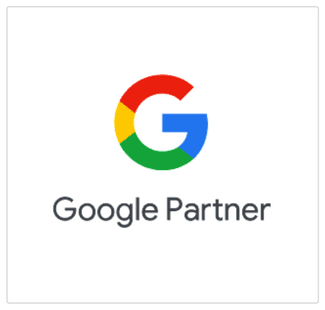How do people who can’t move their arms use your site? What about people who can’t see well or at all? Or people who are hard of hearing or understanding or have other disabilities? Well, these questions only illustrate the tip of the iceberg when it comes to the challenges people with different disabilities face online.
Digital Accessibility: Creating a more inclusive digital environment
What is digital accessibility?
Digital accessibility is the ability to access and use online platforms, including websites and applications, in an efficient and autonomous way. It is important to understand that digital accessibility is not only a technical issue, but also a social and ethical value. In a society where technology plays a central role, creating an accessible online environment is essential for the inclusion and participation of all citizens.
How can we make websites more accessible?
Through keyboard compatibility:
Keyboard compatibility is a fundamental feature for people with physical or visual disabilities. As a web design agency, ensuring that all features of a website can be accessed and used only with the keyboard is crucial to removing barriers to access for these users. This not only improves their experience, but also makes the site more user-friendly for other users, giving them an efficient alternative to the mouse.
By captioning videos:
Video captions are not just a facility for the hearing impaired; they provide an enhanced experience for all users. Imagine an environment where essential sounds in a video, such as music or dialogue, are clearly highlighted. This not only makes content easier for people with disabilities to understand, but also brings significant benefits to all users, in any hearing context.
Colours with correct contrast:
Ensuring proper contrast between colours on a website is essential to make content visible and easy to read , for a better user experience. This is not just for the visually impaired or colour-blind, but improves visibility for everyone, including those browsing sites in variable lighting conditions or on small screens.
Text customisation:
Text customisation is an essential feature to give users the ability to tailor content to their individual needs and preferences. This not only offers benefits for people with low vision or cognitive disabilities, but also brings additional advantages such as adaptability to different screen sizes and easy translation of content into different languages.
Clear and navigable structure:
A clear and navigable structure on a website not only facilitates orientation for people with disabilities, such as those with low vision, but also benefits all users. This feature ensures that information is easy to locate and identify, which contributes to improving the user experience for the entire online community.
Voice recognition:
Voice recognition provides an important way for people with various disabilities to interact. This feature not only removes barriers for people with physical or cognitive disabilities, but also brings significant benefits to all users. Imagine a world where you can dictate text instead of typing it or searching for information using voice commands.
Text-to-Speech Software:
Text-to-speech software is a crucial feature for blind or visually impaired people. It not only provides the ability to listen to content, but also ensures that the structure of information is well defined, making it easier for users with different cognitive disabilities to navigate and understand context.
Intelligible content:
Creating content that is easy to follow and understand is essential for all categories of users. This not only simplifies the understanding of information for people with learning disabilities, but also benefits all users, regardless of their level of expertise in a particular field.
Large links, buttons and controls:
Providing appropriately sized links, buttons and controls is crucial for users with dexterity difficulties. This not only improves accessibility for these users, but also benefits all those accessing content on devices with smaller screens or in situations where accuracy of movement may be limited.
Notifications and feedback:
Users need clear feedback and appropriate notifications to understand the status of their interactions. This not only eliminates confusion for people with cognitive disabilities, but also increases trust and understanding for all users, regardless of their level of familiarity with the online environment.
Experiences of people with disabilities
It is imperative to understand that not all users have the same capabilities and accessibility. Marius, an online shopper with colour blindness, and Alex, a reporter with repetitive stress injuries, offer unique perspectives on the difficulties they face when browsing the internet.
Marius’ color blindness to the colors red and green creates a complicated online experience. The inadequate contrast of text and images, coupled with the exclusive use of colour to indicate key information, presents him with considerable obstacles. Combinations of red and green look the same to him, and unlabeled color swatches leave him unable to make informed choices.
However, Marius finds greater comfort on websites that incorporate appropriate contrast and allow him to adjust settings according to his needs. Appropriate colour labelling and the use of asterisks to indicate essential information make shopping easier, giving him a more pleasant experience.
With over 20 years of experience as a reporter, Alex has acquired a repetitive stress injury that makes it painful to use the mouse and type. With significant research efforts and commitment, he has adopted solutions such as ergonomic keyboards, keyboard commands and voice recognition software to manage the pain.
Alex faces challenges when websites are not designed for keyboard-only navigation. Web forms lack keyboard equivalents, and navigating through pages without a mouse becomes a difficult task. Discovering the benefits of touch assistance on his mobile phone opens up new possibilities for Alex. Customised solutions created by his employer are just one step towards a more efficient and comfortable digital experience.
Creating accessible websites: Surfing the Internet is for everyone
1. Ensure proper contrast for a quality visual experience
When it comes to proper contrast, web designers need to pay attention not only to text, but also to images, background gradients and other interactive elements. This practice translates into a pleasant visual experience, accessible to all users, regardless of their specific needs.
2. Diversification of information delivery methods
Colour should not be the only means of conveying information on an accessible website. It is crucial to offer clear alternatives, such as indicating mandatory fields by an asterisk and not just by colour. Diversifying the way information is conveyed contributes to efficient navigation for all users.
3. Distinct styles for easy identification
Ensuring easy identification of interactive elements, such as links and buttons, is an essential aspect of accessible web design. Layout changes when interacting, such as mouse-over or keyboard focus, enhance the visual experience and ensure consistency across the website.
4. Consistent navigation and easily identifiable options
To improve accessibility, provide clear and consistent navigation options. Maintaining consistent names, styles and positioning in the navigation helps users easily find their way around the site. Offering alternatives, such as site search or site map, complements an accessible and effective design.
5. Clear labels and close proximity to form elements
For smooth interaction with forms, make sure labels are clear and associated with each field. Avoiding large spaces between labels and fields contributes to a smooth user experience.
6. Clear and prominent feedback
In accessible design, provide clear feedback for interactions such as form submission confirmation or error notifications. Instructions should be easily identifiable to guide users and improve interaction.
8. Adaptable design for different screen sizes
The proactive approach to adaptive design is essential in the diverse age of devices. Ensure legibility and readability on different screen sizes, including mobile phones, for an optimal experience.
Creating dyslexia-friendly websites, integrating voice navigation and keyboard navigation capabilities, and implementing screen reading for those who cannot read are not only best practices, but also a responsibility to a wide audience. Digital accessibility is not only a technical issue, but also a manifestation of respect for human diversity. An inclusive online experience transcends physical and cognitive barriers, giving every individual, regardless of ability, free and equal access to information and services. In embracing these principles, web designers become pioneers in creating a digital environment where diversity is not only accepted but celebrated, and access to the internet becomes a truly universal experience.
Are you looking for a solution to make your website accessible and digitally optimized for all people, including those with disabilities? We are here for you! We offer web design and digitally accessible website creation services, and our mission is to make the internet a more inclusive place. Contact us today and let’s get started together to transform your website into a friendly and equitable online experience for all users.







